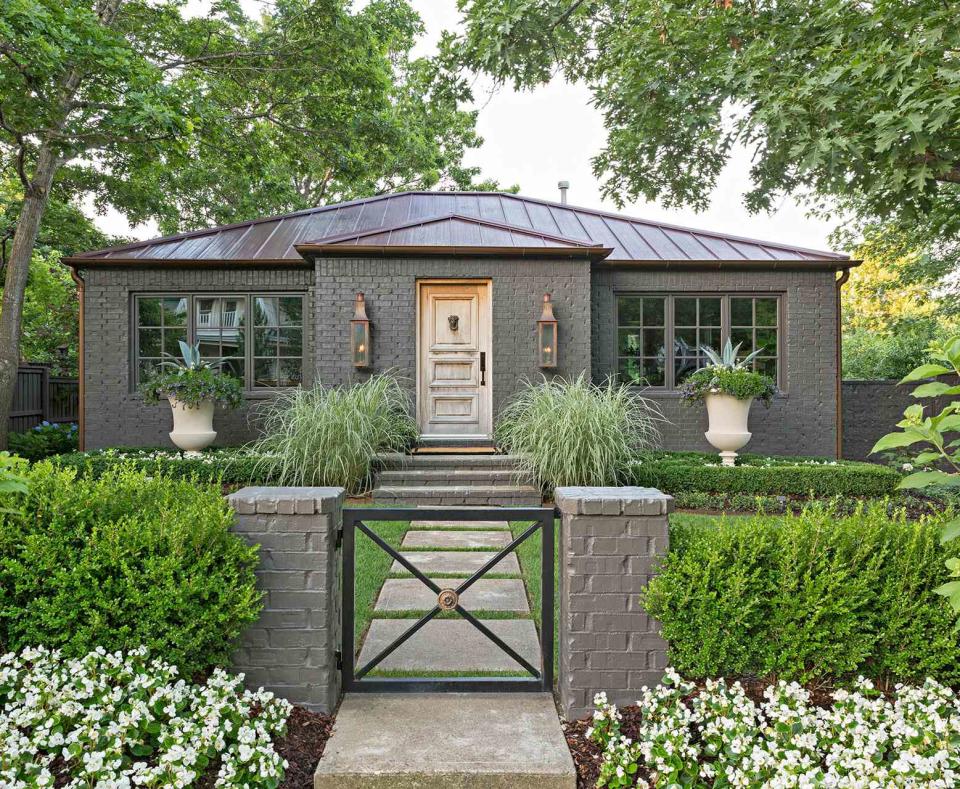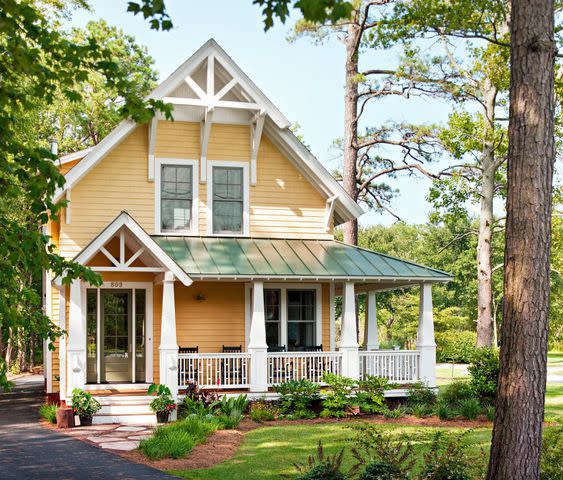What Is a Single-Family Home?
It’s a key part of the American Dream, but do you know exactly what a single-family home is? See how experts define these sought-after structures.

You might think you know what a single-family home is, but do you understand what sets these structures apart from multi-family homes, condos, and apartments? The answers aren’t so straightforward. We’ll go over the basics of what is a single-family home, and we’ll look at what to expect if you decide to purchase one.
Related: What Downsizing Is—Plus How to Know When Downsizing Is Right for You
What is a Single-Family Home?
When it comes to the question of what is a single-family home, the key word is “single.” Think “one” or “solo”—and picture that idyllic, standalone house with a private yard and driveway.
“A single-family home is a freestanding home that shares no common walls with another residence and is set alone on its own piece of property,” says Courtney Klosterman, a home insights expert at Hippo, a home insurance company. “It’s designed to be used as a single dwelling unit with one owner.”
Outside that simple definition, single-family homes come in many shapes and sizes.
“There are many different styles of single-family homes,” says Lauryn Dempsey, Realtor and founder of Dempsey Group. “The overarching categories that single-family homes are often grouped into include ranch (single story with or without a basement), bi-level, tri-level, multi-level, and two-story.”
What a Single-Family Home Is Not
It might be easier to think about what a single-family home is not. It’s not a duplex to start.
“A duplex is two homes with a shared wall, typically side by side,” says Bret Ceren, an associate broker at Platinum Living Realty.
A single-family home is not a condo or an apartment, even if a unit only houses one household.
“A condominium is a building structure divided into several units that are each separately owned, surrounded by common areas that are jointly owned,” says Dawn Ruffini, president of the Massachusetts Association of Realtors. “Condo properties can be as few as two units and up to thousands. There are typically condo documents that outline rules about using common and individually owned units.”
Single-family homes are distinct from modular and mobile homes, too.
“Modular or mobile homes are built off-site and assembled on the plot of land where it will be housed. A single-family home is built on-site,” Dempsey says.
Related: Tour the Interior of a Modernized Mobile Home Near the Ocean
Single-Family Homes vs. Multi-Family Homes
Structure and Zoning Laws
“Multi-family homes contain separate residential units within a single structure. [They are] designed to accommodate more than one family living separately. Examples of this are condos or an apartment complex,” Klosterman says.
There are laws that govern how many people can live in a particular type of home to ensure it is safe and habitable, Dempsey says. This means that, in most cases, you cannot house multiple households within a structure designated as a single-family home.
“If a home is purchased using a mortgage, the mortgage holder will also have rules surrounding the use of the property,” Dempsey says. “The promissory note will outline your requirements for the upkeep of the property that are contingent to receive the loan.”
Klosterman says that buyers who prefer single-family homes over multi-family homes usually cite the added privacy and space as perks. Single-family homes also mean you get your own backyard and the freedom to change and upgrade your property.
Cost is a Factor
“While owning a single-family home comes with many perks, there’s a price tag associated. Once you go through the pre-approval process with your lender, you will have a better idea of what you can afford so that you can decide on what’s best for you and your family,” Klosterman says.
Single-family homes are typically more expensive, meaning you’ll have a higher monthly payment, closing costs, and property tax. You’ll also be solely responsible for maintaining the home, both inside and outside.
“Most multi-family homes come with an HOA that covers the exterior part of the home and grounds. Sometimes utilities like water and trash are also covered by the HOA,” Klosterman says. “Some single-family homes also have HOAs, depending on the neighborhood.”

Important Things to Consider Before Purchasing a Single-Family Home
As mentioned, all maintenance of a single-family home is up to you, the sole owner. You’ll want to keep up with regular, seasonal maintenance and especially watch for problems like leaks.
Klosterman says you’ll want to keep an eye on the broad categories of landscaping, heating/cooling, plumbing, roof, gutters, and drainage.
“Being proactive with your home maintenance routine will help reduce the possibility for future repair expenses, and being a proactive homeowner means being an educated homeowner,” she says. “We find that the simplest tasks can be the most important to prevent accidents before they happen. Start by replacing HVAC filters, cleaning your dishwasher and dryer filters, and replacing the batteries in your smoke detectors.”
Related: Farmhouse Is Out, Brutalism Is In: Predictions from Zillow's 2024 Trend Report
For more Better Homes & Gardens news, make sure to sign up for our newsletter!
Read the original article on Better Homes & Gardens.

